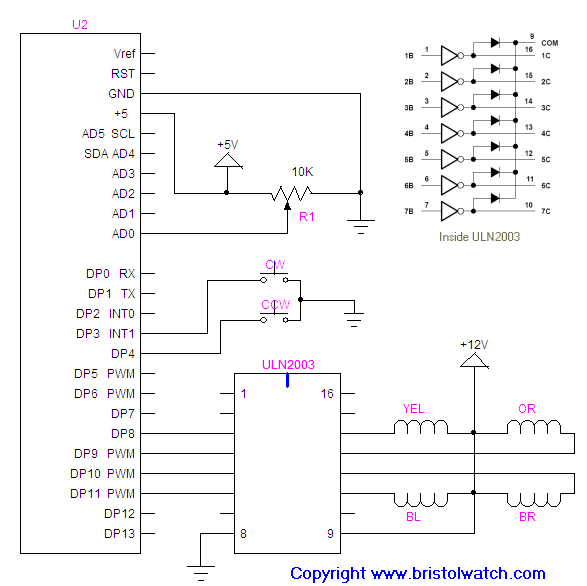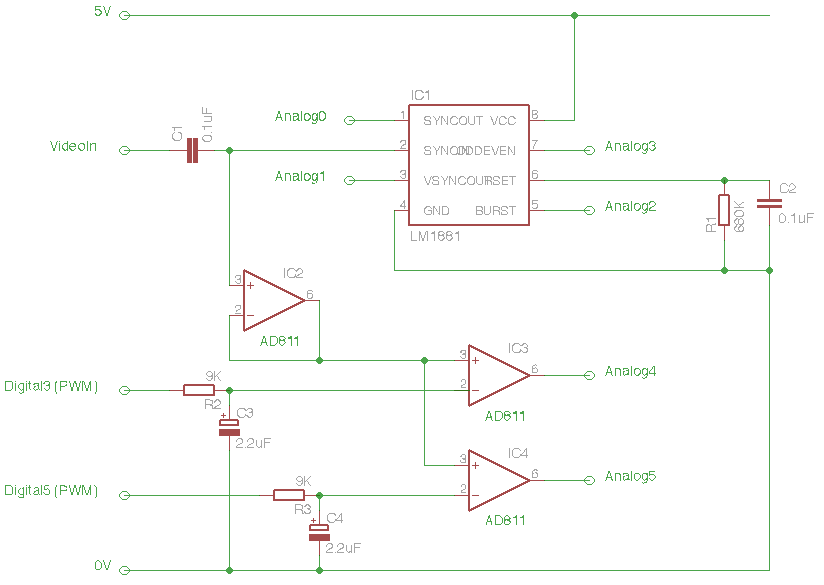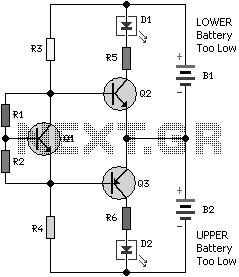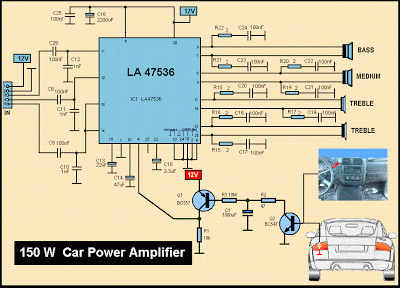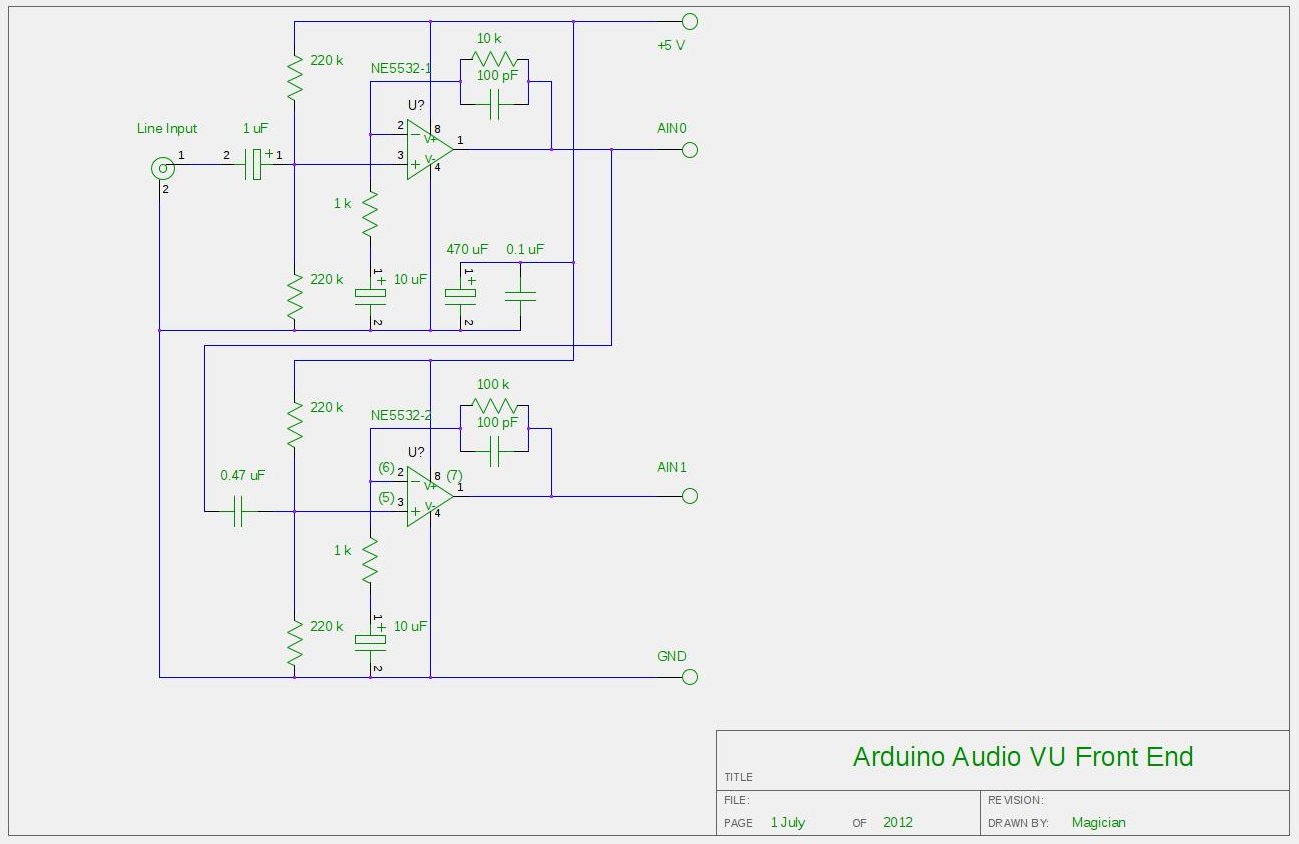
arduino uno schematic
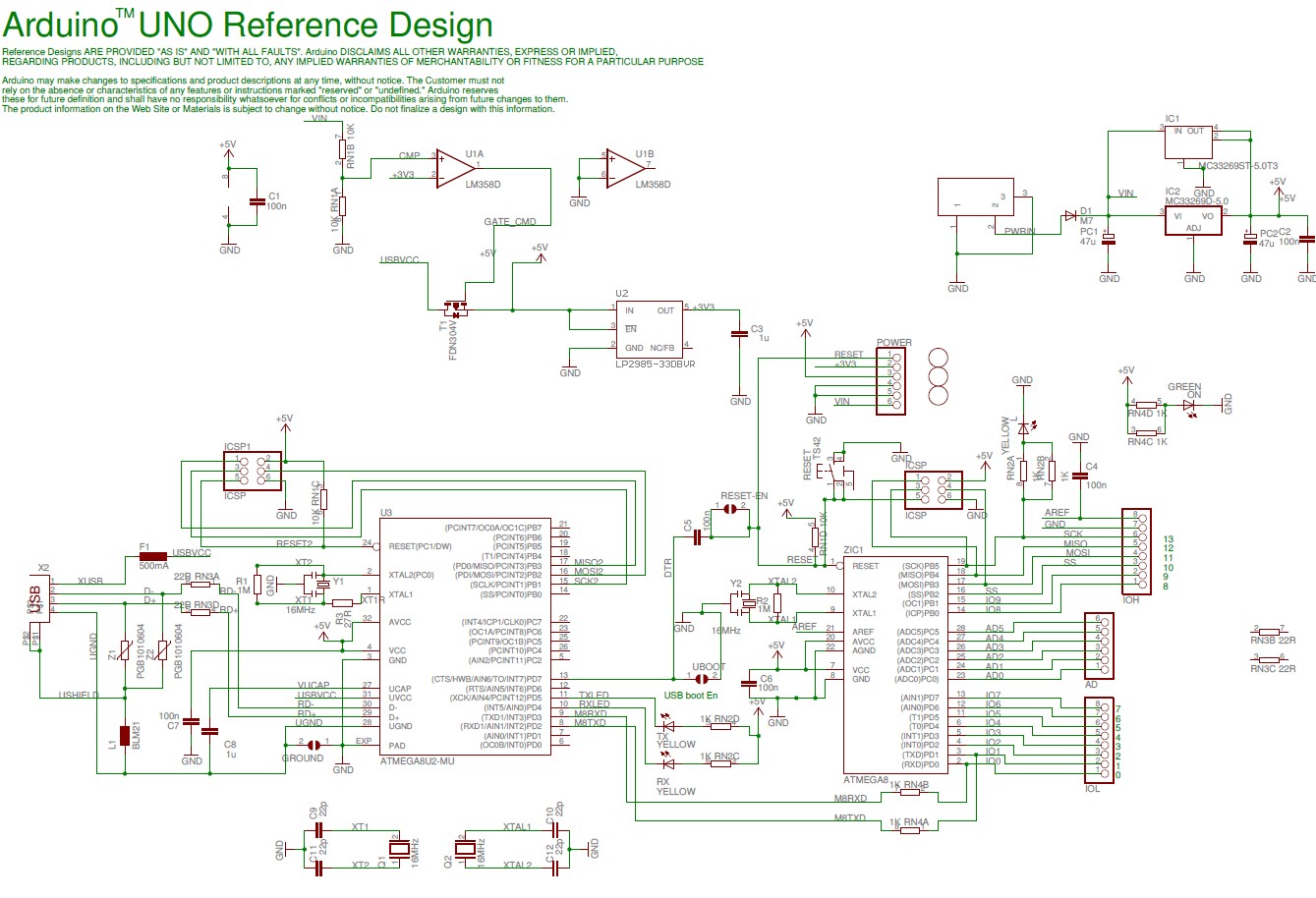
The Arduino Uno schematic diagram is available for viewing. The Arduino Uno is a microcontroller board that utilizes the ATmega328 chip. It features 14 digital input/output pins, of which 6 can function as PWM outputs, along with 6 analog inputs, a 16 MHz crystal oscillator, a USB connection, a power jack, and an ICSP. Additionally, there is a schematic diagram of an 800-watt audio amplifier that employs MOSFET technology. This amplifier is suitable for various high-power applications requiring low noise, minimal distortion, and superior sound quality, such as sub-woofer amplifiers, front-of-house stage amplifiers, or a channel in a high-powered surround sound system. Furthermore, there is an A/B Box pedal schematic designed for electric guitar by Rick Barker. This A/B Box effect was initially created for switching between different harmonica microphones and features a low-noise dual preamp for enhanced performance.
The Arduino Uno microcontroller board, based on the ATmega328, serves as a versatile platform for a wide range of electronic projects. The board's 14 digital I/O pins allow for extensive interfacing with various components, while the 6 analog inputs facilitate the connection of sensors and other analog devices. The inclusion of a 16 MHz crystal oscillator ensures stable operation and timing accuracy, which is critical for real-time applications. The USB connection allows for easy programming and communication with a computer, while the power jack provides an alternative power supply option, enhancing the board's flexibility in different environments.
The 800-watt audio amplifier schematic showcases a robust design utilizing MOSFETs, which are known for their efficiency and ability to handle high power levels. This amplifier is designed to deliver exceptional sound quality with low distortion, making it ideal for applications such as sub-woofer amplification or high-powered surround sound systems. The schematic likely includes key components such as the input stage, output stage, power supply circuitry, and feedback mechanisms to optimize performance.
The A/B Box pedal schematic, designed by Rick Barker, represents a practical solution for musicians needing to switch between different audio sources. The low-noise dual preamp enhances the signal integrity, ensuring that the sound quality remains high when switching between microphones or instruments. This pedal design is particularly beneficial for harmonica players but can be adapted for various applications in electric guitar setups. The schematic may include details on the input/output jacks, switching mechanism, and power supply requirements, providing a comprehensive guide for construction and use.
Overall, these schematics represent significant contributions to the fields of microcontroller applications and audio amplification, showcasing the versatility and capability of modern electronic design.Here the Arduino UNO schematic diagram (click to enlarge): About Arduino UNO: The Arduino Uno is really a microcontroller board based on the ATmega328. It has 14 digital input/output pins (of which 6 may be employed as PWM outputs), 6 analog inputs, a 16 MHz crystal oscillator, a USB connection, a power jack, an ICSP.
Here the schematic diagram o f 800 watt audio amplifier with MOSFET. This amplifier can be used for practically any application that requires high power, low noise, distortion and excellent sound. Examples would be Sub-woofer amp, FOH stage amplifier, One channel of a very high-powered surround sound amplifier etc.
For detail explanation about how this circuit. This is a A/B Box pedal schematic for electric guitar was designed by Rick Barker. This A/B Box effect was originally designed for switching between different harmonica mics. This A/B Box featured low noise dual preamp for better effect. Download the schematic of A/B Box Guitar Effect: Download Link 🔗 External reference
The Arduino Uno microcontroller board, based on the ATmega328, serves as a versatile platform for a wide range of electronic projects. The board's 14 digital I/O pins allow for extensive interfacing with various components, while the 6 analog inputs facilitate the connection of sensors and other analog devices. The inclusion of a 16 MHz crystal oscillator ensures stable operation and timing accuracy, which is critical for real-time applications. The USB connection allows for easy programming and communication with a computer, while the power jack provides an alternative power supply option, enhancing the board's flexibility in different environments.
The 800-watt audio amplifier schematic showcases a robust design utilizing MOSFETs, which are known for their efficiency and ability to handle high power levels. This amplifier is designed to deliver exceptional sound quality with low distortion, making it ideal for applications such as sub-woofer amplification or high-powered surround sound systems. The schematic likely includes key components such as the input stage, output stage, power supply circuitry, and feedback mechanisms to optimize performance.
The A/B Box pedal schematic, designed by Rick Barker, represents a practical solution for musicians needing to switch between different audio sources. The low-noise dual preamp enhances the signal integrity, ensuring that the sound quality remains high when switching between microphones or instruments. This pedal design is particularly beneficial for harmonica players but can be adapted for various applications in electric guitar setups. The schematic may include details on the input/output jacks, switching mechanism, and power supply requirements, providing a comprehensive guide for construction and use.
Overall, these schematics represent significant contributions to the fields of microcontroller applications and audio amplification, showcasing the versatility and capability of modern electronic design.Here the Arduino UNO schematic diagram (click to enlarge): About Arduino UNO: The Arduino Uno is really a microcontroller board based on the ATmega328. It has 14 digital input/output pins (of which 6 may be employed as PWM outputs), 6 analog inputs, a 16 MHz crystal oscillator, a USB connection, a power jack, an ICSP.
Here the schematic diagram o f 800 watt audio amplifier with MOSFET. This amplifier can be used for practically any application that requires high power, low noise, distortion and excellent sound. Examples would be Sub-woofer amp, FOH stage amplifier, One channel of a very high-powered surround sound amplifier etc.
For detail explanation about how this circuit. This is a A/B Box pedal schematic for electric guitar was designed by Rick Barker. This A/B Box effect was originally designed for switching between different harmonica mics. This A/B Box featured low noise dual preamp for better effect. Download the schematic of A/B Box Guitar Effect: Download Link 🔗 External reference
